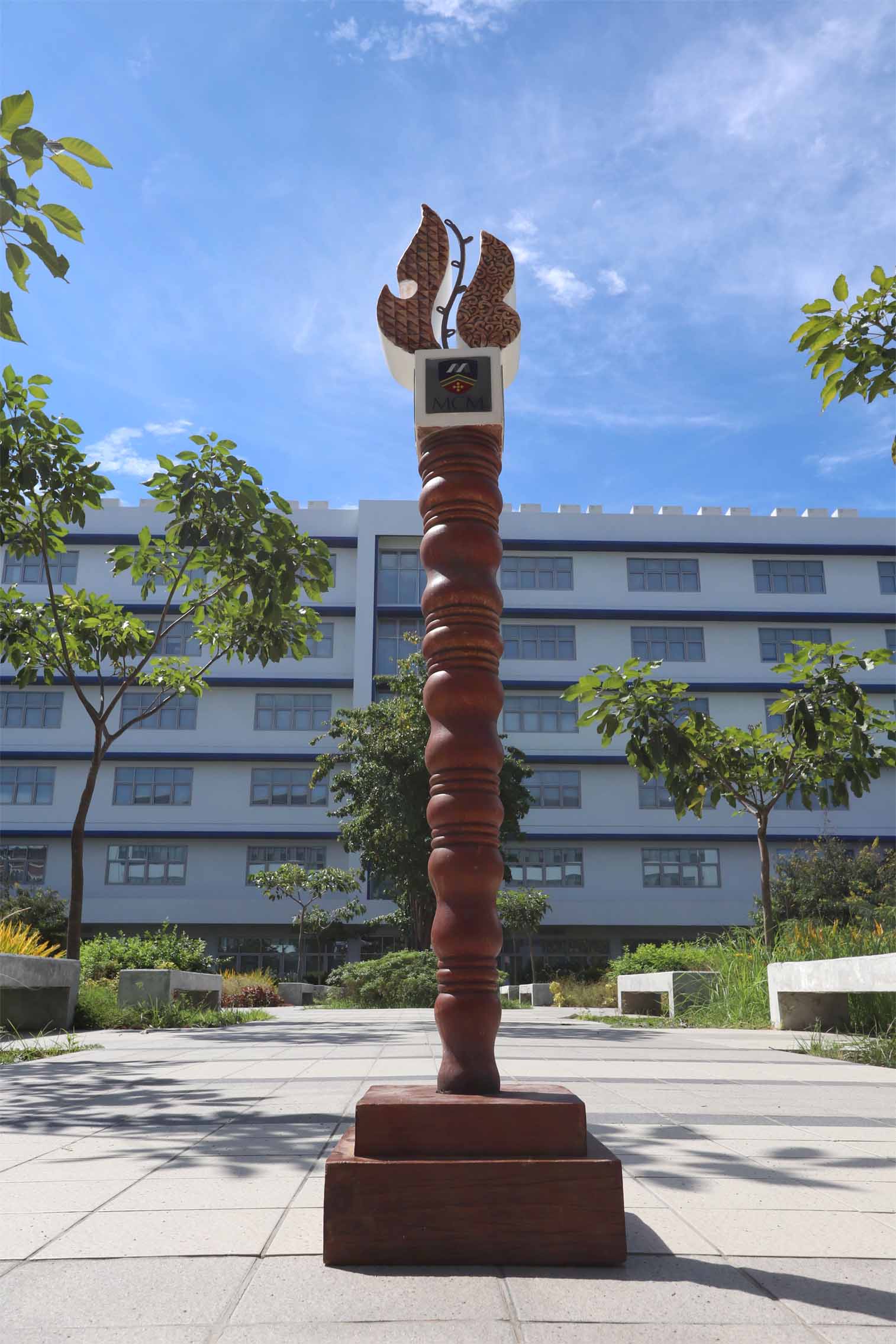MapúaMCM Mace: Emblematic Sculpture Art by Kublai Millan
The official ceremonial mace of Mapúa Malayan Colleges Mindanao, A Mapúa School — officially titled the “MapúaMCM Mace” — was installed in the campus last June 2020. It was endorsed to the institution earlier in the month of May 2020 and comes in varying sizes. There is one that is handheld, one that is medium sized for display, and one that is a larger monument of the main flame sculpture placed at the MapúaMCM Garden.

MapúaMCM Mace, the ceremonial mace designed by Kublai Millan.
The MapúaMCM Mace is an intricately hand-crafted 6 foot long staff that features an emblematically etched sculpture of a flame atop of MapúaMCM’s logo and a thick winding staff. The Mace was made with reinforced concrete, polyepoxide, and steel.
MapúaMCM’s Executive Vice President and Chief of Operations, Engr. Dodjie S. Maestrecampo, explains the mace’s importance to the institution’s future formal events.
“The mace is a ceremonial symbol representing the school’s governing authority and is present only in official ceremonies where the president and board of trustees are in attendance, and held by the chief academic officer before the president or chancellor and dignitaries during academic processions.”
The MapúaMCM Mace’s design is inspired by Mapúa Malayan Colleges Mindanao as a Mapúa School representing the best in engineering education in the country based on the designer, Kublai Millan’s, comments. He took the school’s image of its distinct identity of the Malay people — their strengths, inspirations and creativity — and formed it into the sculpture that we see on the mace.
The mace was designed and sculpted by Rey Mudjahid “Kublai” Ponce Millan — or better known as “Kublai Millan”— a famous Mindanaoan sculpture artist. Upon getting more in-depth with the features of the design, Kublai explains the overall shape and form of the centerpiece of the Mace being a flame “representing the fire that only inspiration and sense of purpose can bring,”.
“The flame is an abstraction of a male and female with the female’s bosom taking a space into the male’s to represent creation, the future. The male has triangles as its detail, which represents stability, true balance, and the past, present, and future. The female has curlicues representing creativity, grace, inspiration, the Eternal Feminine.”
Kublai Millan is most known for his sculpture works such as “Kampilan” by Sultan Kudarat in the City of Sultan Kudarat, Maguindanao and the “Risen Christ” in the church of Tagum City, the giant Durian monument in Davao City International Airport, and the Giant Eagle and Bagobo children seen at Davao City’s People’s Park.





